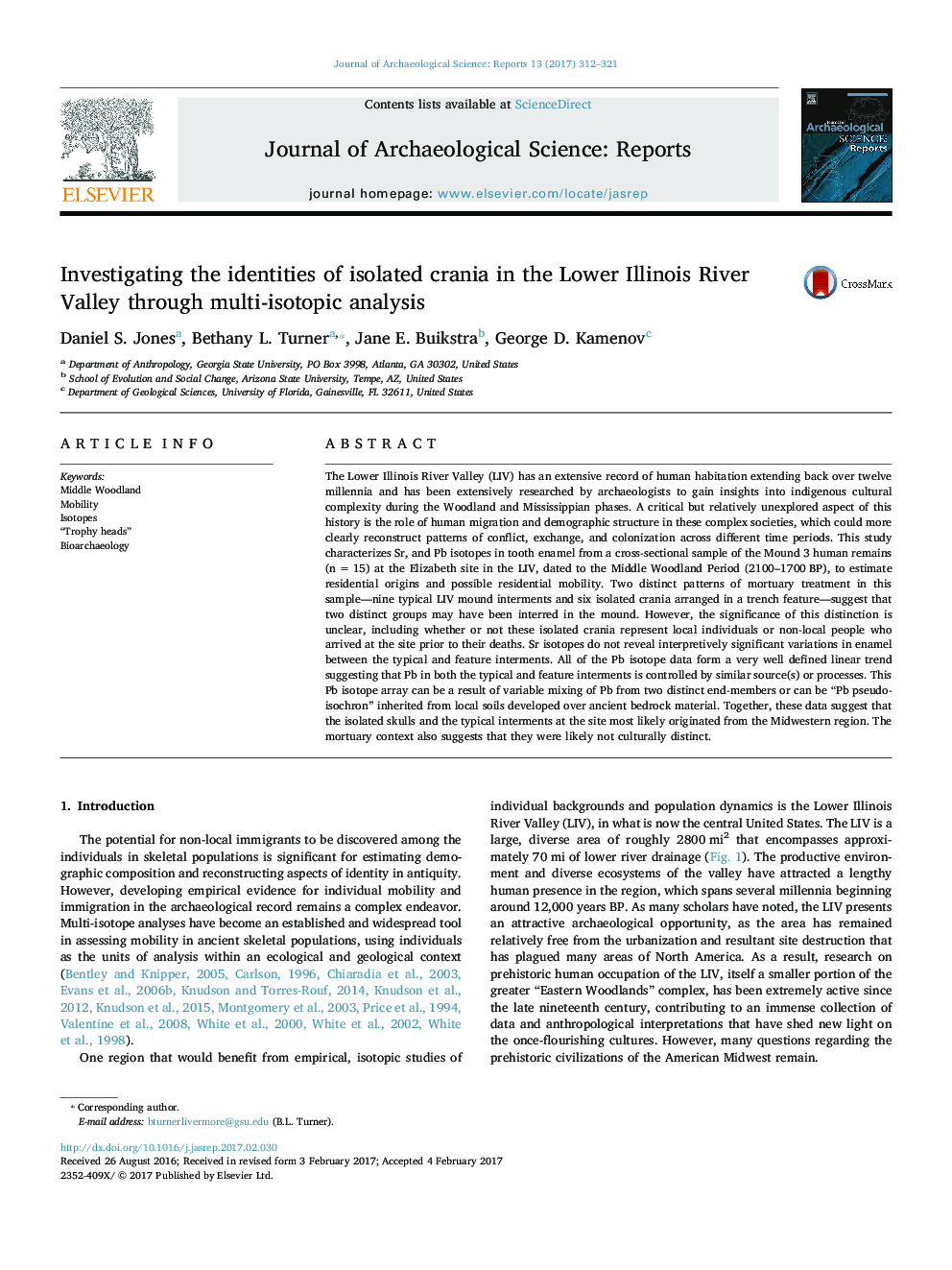| Article ID | Journal | Published Year | Pages | File Type |
|---|---|---|---|---|
| 5112419 | Journal of Archaeological Science: Reports | 2017 | 10 Pages |
Abstract
The Lower Illinois River Valley (LIV) has an extensive record of human habitation extending back over twelve millennia and has been extensively researched by archaeologists to gain insights into indigenous cultural complexity during the Woodland and Mississippian phases. A critical but relatively unexplored aspect of this history is the role of human migration and demographic structure in these complex societies, which could more clearly reconstruct patterns of conflict, exchange, and colonization across different time periods. This study characterizes Sr, and Pb isotopes in tooth enamel from a cross-sectional sample of the Mound 3 human remains (n = 15) at the Elizabeth site in the LIV, dated to the Middle Woodland Period (2100-1700 BP), to estimate residential origins and possible residential mobility. Two distinct patterns of mortuary treatment in this sample-nine typical LIV mound interments and six isolated crania arranged in a trench feature-suggest that two distinct groups may have been interred in the mound. However, the significance of this distinction is unclear, including whether or not these isolated crania represent local individuals or non-local people who arrived at the site prior to their deaths. Sr isotopes do not reveal interpretively significant variations in enamel between the typical and feature interments. All of the Pb isotope data form a very well defined linear trend suggesting that Pb in both the typical and feature interments is controlled by similar source(s) or processes. This Pb isotope array can be a result of variable mixing of Pb from two distinct end-members or can be “Pb pseudo-isochron” inherited from local soils developed over ancient bedrock material. Together, these data suggest that the isolated skulls and the typical interments at the site most likely originated from the Midwestern region. The mortuary context also suggests that they were likely not culturally distinct.
Keywords
Related Topics
Social Sciences and Humanities
Arts and Humanities
History
Authors
Daniel S. Jones, Bethany L. Turner, Jane E. Buikstra, George D. Kamenov,
